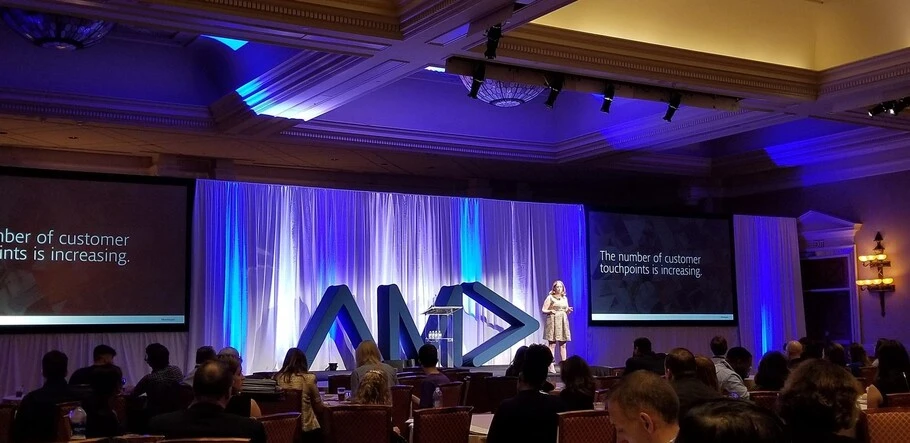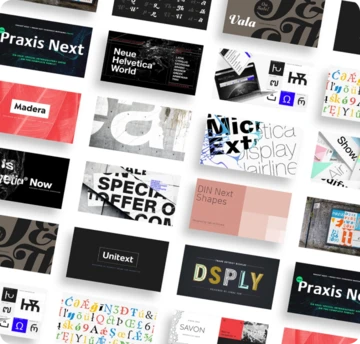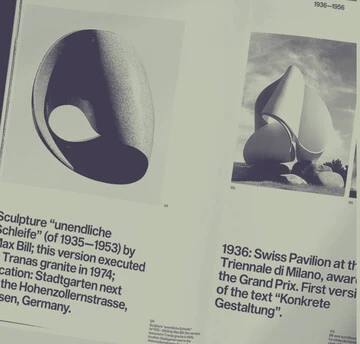Marketing in the age of authenticity: From baby boomers to Generation Z.

From frictionless purchase opportunities to unparalleled customer service, today’s shoppers are demanding more from the brands that serve them. To succeed, modern marketers must compete not only on the quality of their products and services, but on the convenience and differentiation of their brand experiences.
Understandably, this was a primary focus of conversation at Marketing Week Live, an event hosted by the American Marketing Association and held last week in Las Vegas, where marketing leaders convened to share strategies, trends, and challenges with one another.
Monotype was excited to sponsor the event, where our own VP of Marketing, Alice Palmer, spoke about how technological developments and behavioral shifts among consumers are changing the way brands must market to them. Primarily, as consumers have gained greater control, there are three notable demands they are making from brands:
1. They want instant access
Millennial shoppers in particular are turning to brands that offer the most relevancy at a maximum level of convenience.
2. They want consistency in the brand identity:
Consumers are projected to own an average of 13 connected devices by 2020 and spend 5.5 hours per day online. As a result, they expect that brands will engage with them in a consistent way across all touchpoints. In fact, 75% of consumers expect companies to provide a consistent experience wherever they engage with them - both online and offline.
3. They want authenticity:
Perhaps most importantly, today’s consumers want a more honest relationship with brands. 94% say they’re likely to be loyal to a brand that offers complete transparency.
“Authenticity” has become a buzzword for marketers in recent years, but for good reason. As more relevant channels enter the fray, it is becoming increasingly difficult for brands to maintain transparency and consistency across the entire brand experience. According to Palmer, “the number of touchpoints between a brand and a consumer has never been greater, and consumers are now utilizing multiple devices and channels prior to making a purchase. This has led to a customer journey that is increasingly non-linear.”
So, what does this mean for marketers hoping to succeed in this new normal? In her presentation, Palmer argues that brands must embrace the unique buying pathways of their target customers, and build experiences that align with various segments of their audience. As one example, marketers must now address buyer profiles that span very distinct generations, from “baby boomers” all the way down to “Generation Z.”
Much has been written about the increased buying power of millennials as individual consumers, but this cohort is now gaining influence in the B2B space as well. In fact, 73% of millennial workers are involved in B2B purchase decisions, and 34% are the sole decision-makers regarding purchases of products or services.
Palmer cites automobile advertising as an example of how brands are redirecting their messaging from product features to experiential considerations in order to address a younger generation of buyers. Traditionally, the car was the center of the story, accompanied by a comprehensive list of features - “6-cylinder, all-wheel drive, etc.” However, the story has largely shifted to put the car in the context of a broader experience that evokes an emotional reaction for a consumer. In some cases, cars themselves are minimized or even removed completely from an advertisement as the message focuses solely on experience, brand values, and other considerations more important to the target buyer.
Understanding who your buyer is and what might be important to them in their personal shopping journey is known as “persona-based marketing.” In her session, Palmer outlined three steps that brands must take in order to tackle a persona-based approach, including:
1. Knowing your target buyers as people:
Marketing data can tell you about a buyer’s role, or organization size, or industry, but persona marketing requires that you understand their goals, their pain points, and their motivations. What excites them about coming to work each day? What excites them in their job?
2. Mapping content directly to personalized buyer’s journeys:
Once you have a keen sense of who your buyer is and what they care about, the next step is to build content and experiences that address their goals and concerns. How will someone become your customer and what will make them stick around?
3. Aligning your marketing channels and tactics:
Finally, you must connect the dots across your holistic brand experience so that there is consistency in messaging and a true path to purchase. Beyond that, you must build a path to a relationship that will help you retain and even grow their business.
At Monotype, we have taken a more customer-centric approach to understand our own client needs. We also work with many of the world’s leading brands to help them build consistency and authenticity in their identities, across all consumer touchpoints. It’s a topic we are passionate about and that we believe will continue to grow in the near future. If you need help to develop a more future-forward brand, please let us know. And thank you to the American Marketing Association for hosting such a compelling week of content and conversations.









